Behavioural modelling - edit dimensions
Once you have created a number of dimensions (behavioural features), it is very simple to edit or create single or multiple variations from them. By right-clicking on a dimension you can access options that allow you to:
-
Edit / adapt an existing dimension.
-
Explore a single dimension using multiple, simple criteria.
-
Create a combination dimension from one or more existing dimensions.
-
Convert one dimension (recency, count, value) into one of the other two dimensions.
-
Explore a single dimension using different time frames.
Explore a Single Dimension with Multiple Criteria.
To edit a single dimension, right-click on it.
You can launch the Generate criteria dialogue from the main Edit dialogue of an individual dimension (behavioural feature). This allows you to select a single variable.
Let's take a Count(Bookings) dimension as the example:
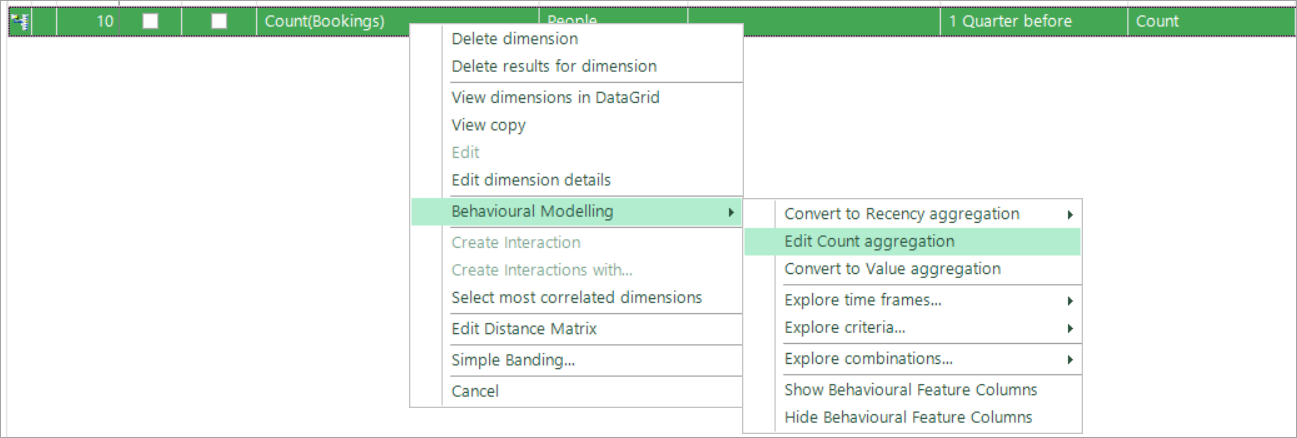
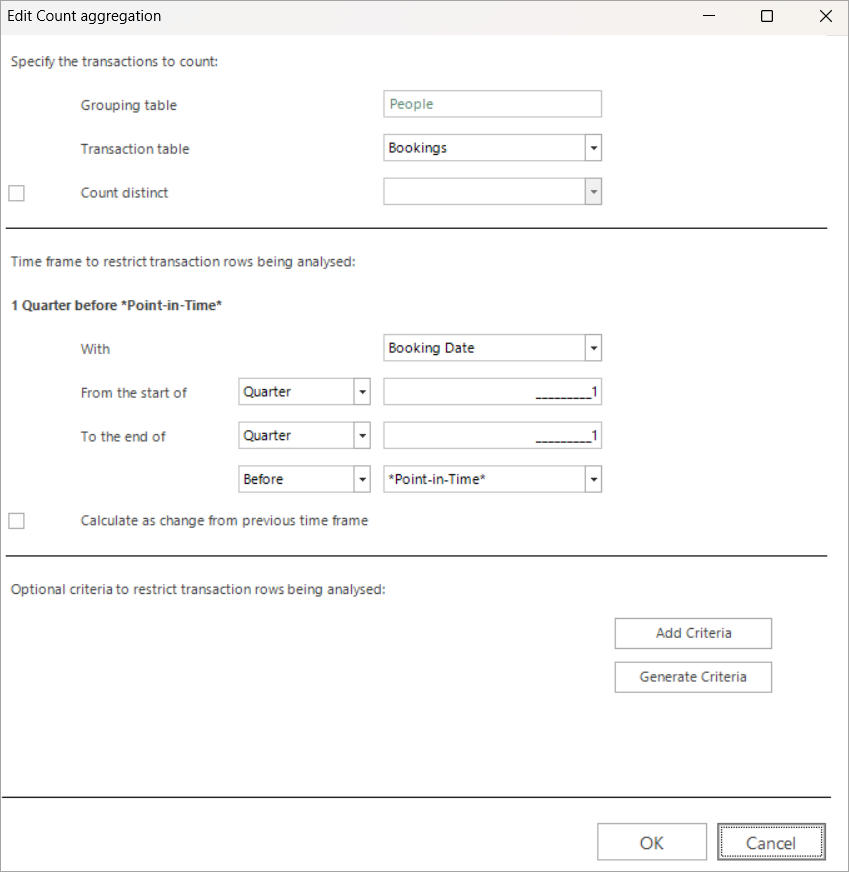
-
Click Generate Criteria
-
In the Generate Criteria dlalogue, use the drop-down menus to set the resolve table and select the variable - here Bookings and Continent.

If the variable is from the same table as the transactions being aggregated - i.e. Bookings in this example - clicking on Define Variable Criteria launches a category level dialogue where you can define simple variable criteria.
-
Click Define Variable Criteria and select each continent.

-
Click OK and confirm that you wish to add the new items.
Multiple behavioural features are generated and added to the Dimensions list, each feature having a criterion based on a single continent.

To edit multiple features simultaneously, hold down the Ctrl key and select the required dimensions.
If you want to select multiple dimensions, you can also Ctrl + click to select and then right-click and access the Generate criteria option via the menu directly.
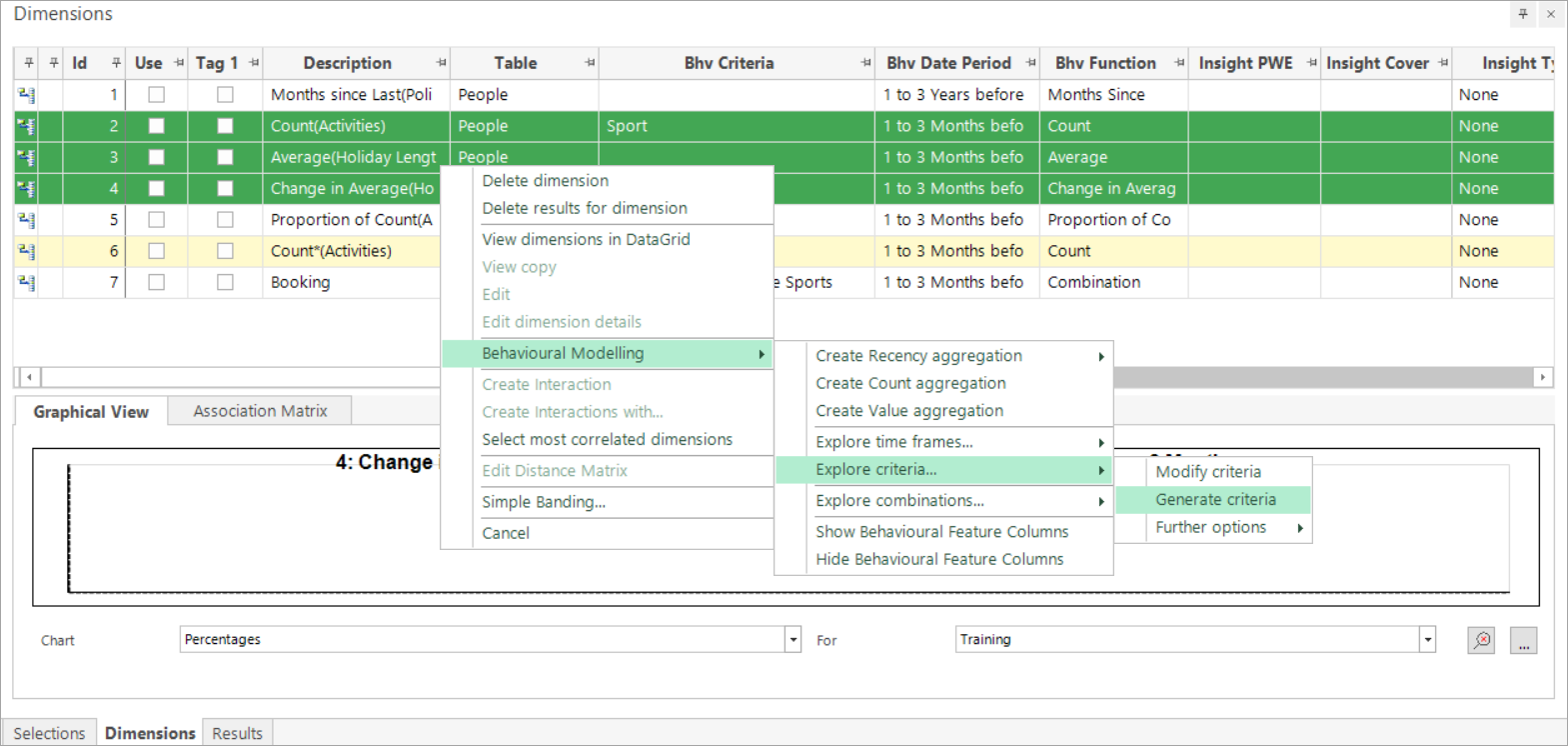
Create a combination dimension from one or more existing dimensions
The image below shows one dimension selected to convert into a combination dimension:
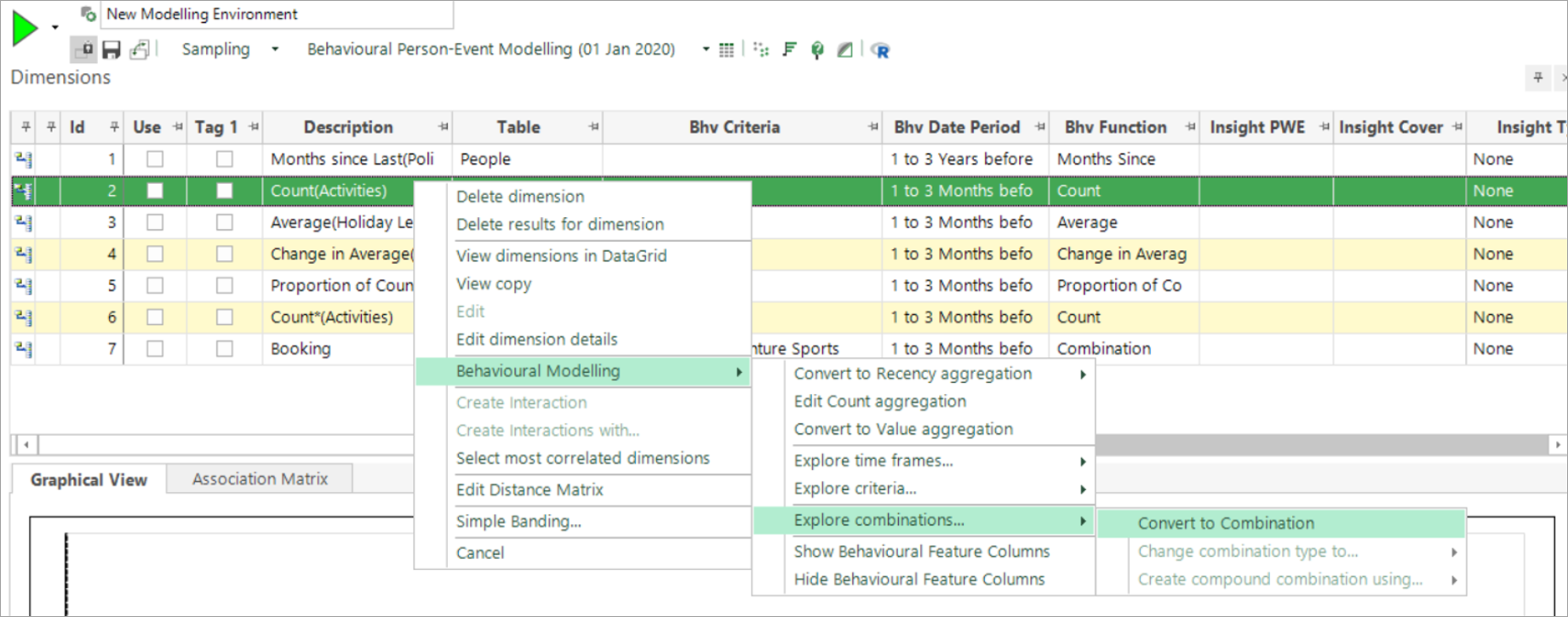
Form more information on working with combination dimensions, see Behavioural modelling - combination dimensions
Convert one dimension type (recency, count, value) into one of the other two dimension types
The image below shows how, for example, you can convert a recency dimension into either a count or value aggregation. All the appropriate settings , used when creating the source variable, are carried over.
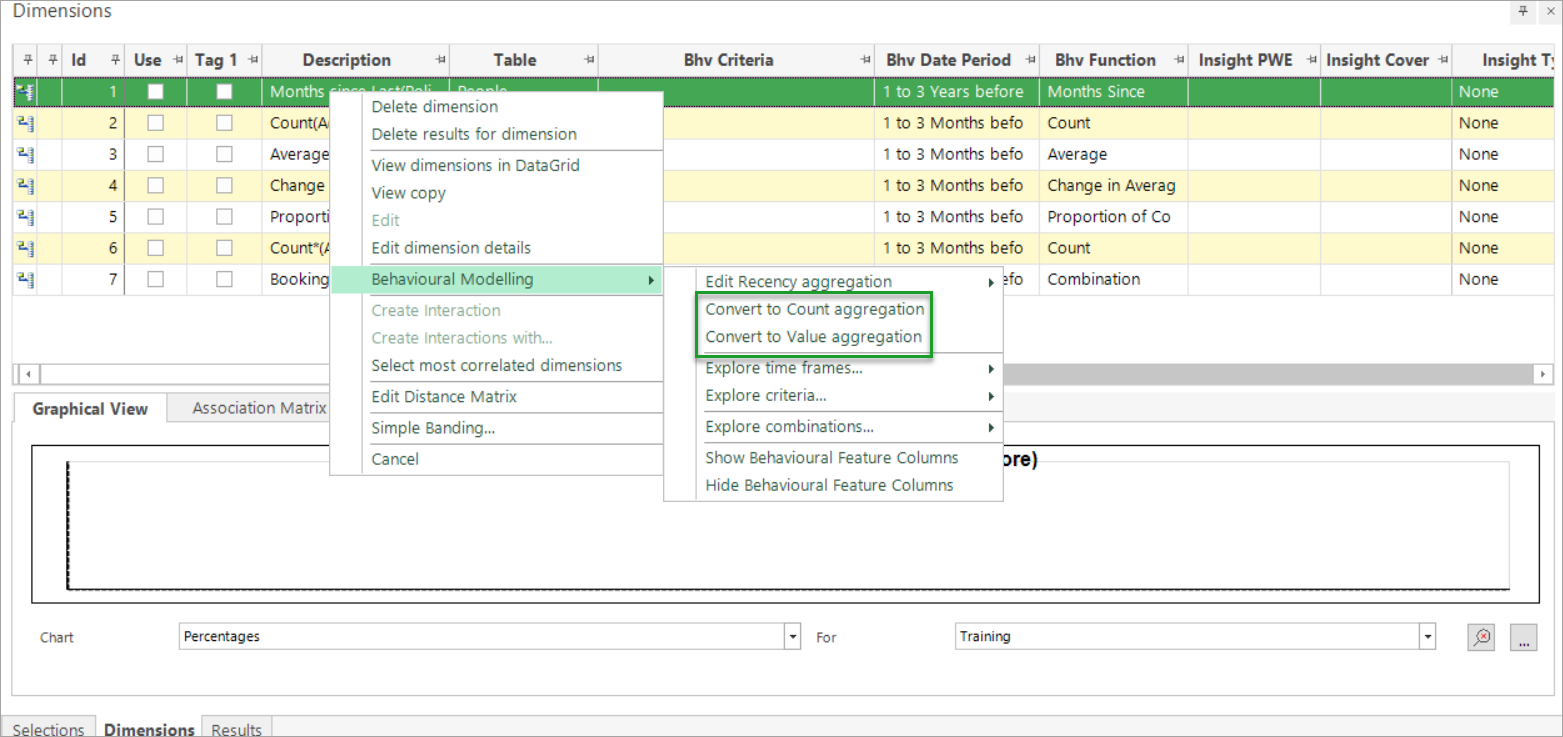
Explore a single dimension using different time frames
From an existing dimension, you can modify the existing time frame, as well as generate new dimensions using alternative time frames.
-
Right click on the dimension you want to study using different time frames and use the menu options to navigate - see below:
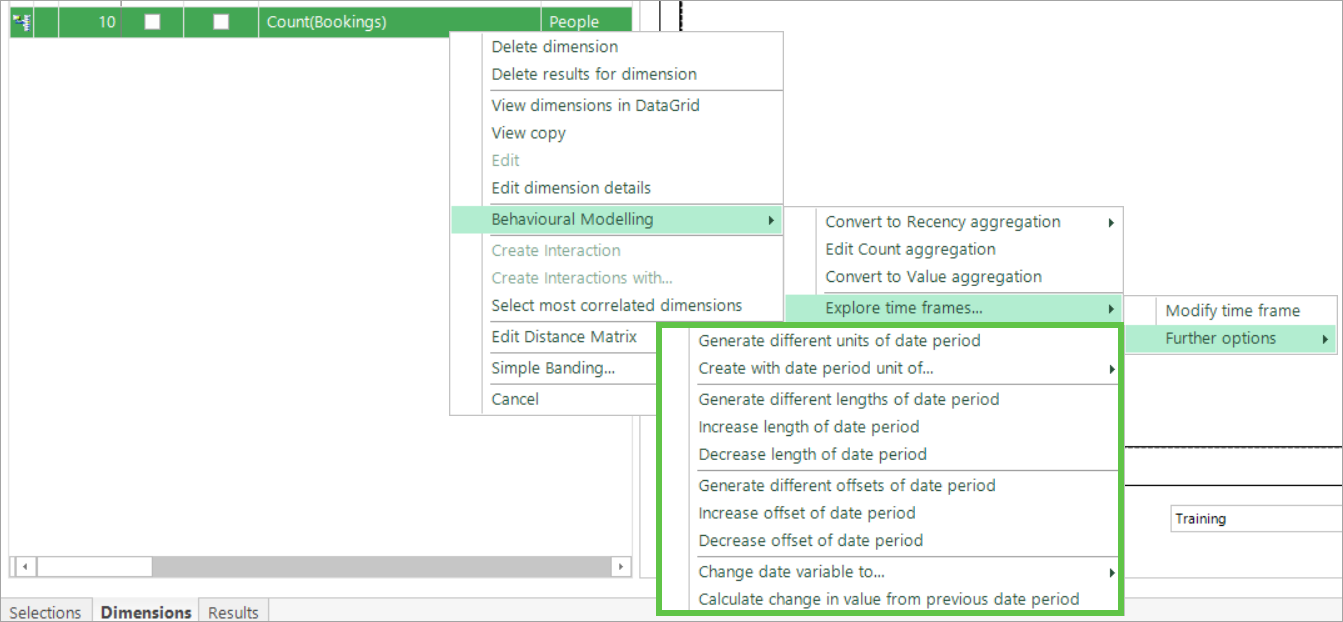
The highlighted dialogue has four sections:
Date units
Section 1 is where you can replicate the dimension using different date units.
-
Hover over Create with date period unit of...
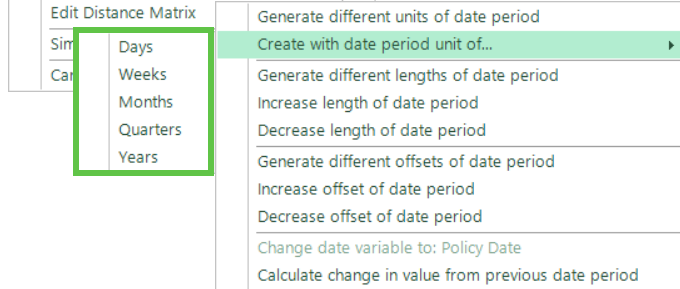
If the original date unit is 1-3 months before the point-in-time, selecting quarters here will set the date period being studied in the new dimension to 1-3 quarters before the point-in-time.
Alternatively, selecting Generate different units of date period, results in the creation of five new dimensions - one for each unit of time.
Lengths
The second section offers 'lengths' options. Here the unit is identified from the Bhv Date Period. For example, if the original dimension is From 1 to 3 Years before, further dimensions based on years are generated - the same for months, etc.

Offsets
Assuming the Bhv Date Period is 1 to 3 months before the point-in-time, generating different offsets will shift that date period accordingly. Here, for example, you might create an identical dimension that studies transactions in the period from 4 to 6 months before the point-in-time instead.

The final section offers two options:
Change Date variable to
This allows you to order the data using a different date variable from the same table - for example, replace Booking Date with Travel Date.
Calculate change in value from previous date period
This lets you compare behaviours within a specific time window to those in a previous equivalent time window. For instance, if the time window is set to 1 to 3 months before a certain point-in-time, the dimension compares behaviours during that 1 to 3 month period with behaviours during the preceding 3-month period - i.e from 4 to 6 months.
Using the Count (Activities) Sport dimension (see Behavioural modelling - count dimensions (behavioural features) for steps) as an example, the new dimension would analyse whether the count of activities increased, decreased, or remained the same between the 4-6 month period (prior to the point-in-time) and the 1-3 month period.

For related topics see Behavioural modelling - creating dimensions (behavioural features)